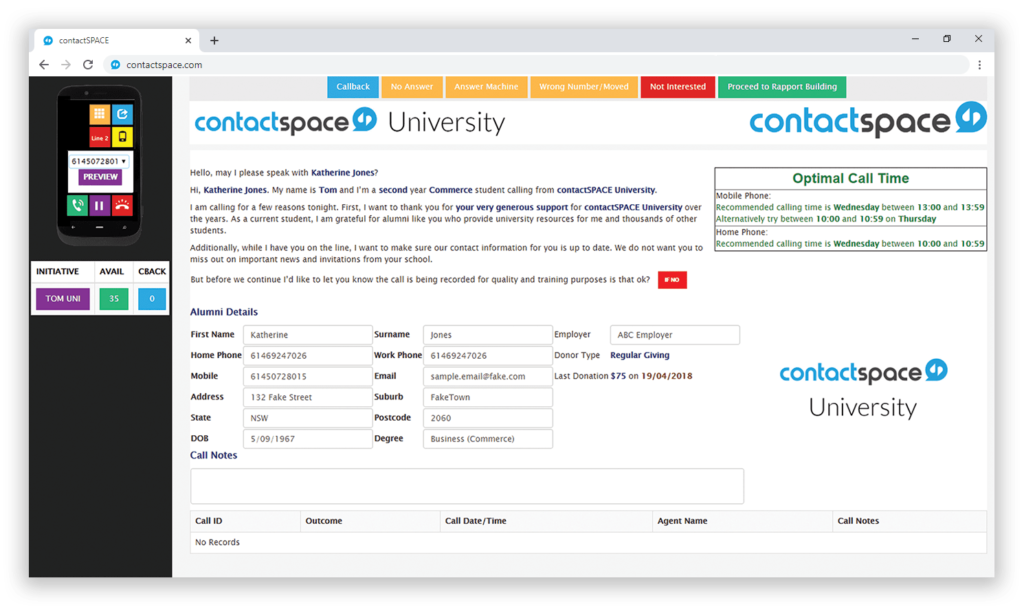In sales, it can be easy to fall into the trap of focusing too hard on closing the deal, rather than anticipating potential objections.
A failure to prepare for sales objections can leave you scrambling for answers when these questions inevitably arise.
Objections often come up in the pre-qualifying stage, or during the appointment setting process. But they can also give you a nasty surprise in the negotiation stage – just as you’re about to sign the prospect on as a customer.
In this guide, we’ll explain 7 techniques you can use to more effectively handle sales objections that you encounter.
7 Effective Objection Handling Techniques

Sales objections can be tough to handle, because they force you to come up with a good response – and quickly.
The key to effective objection handling is preparation – both in terms of considering common objections that will arise, and also practising your objection handling technique.
1. Pause for a moment
Carefully think about the customer’s objection and how you will respond. What you say next is the most crucial step in handling the objection.
The best sales representatives pause for a moment after hearing an objection, while inexperienced sales reps sometimes do the opposite.
Pausing gives you a moment to scan your internal playbook, so you can better-optimise your response. Or, if you use contactSPACE and you’re on a call with a prospect, you might take a moment to click on and read from the correct objection-handling box on your CallGuide interface.

The other reason to pause for a moment is to make absolutely sure that the prospect has finished talking. Interrupting a customer from sharing what’s on their mind can make it difficult for you to build rapport with them.
2. Ask clarifying questions

Besides receiving a generic “brush-off” response from an uninterested lead, most prospects provide specific reasons for making a sales objection. The question now is: what will you do after you hear their objection?
Start by asking clarifying questions. This technique helps to address the real issue without creating a rift between you and the prospect. Clarifying questions are a crucial method of obtaining further information that you can use to provide a better response.
You can apply Chris Voss’s tactic of mirroring, where you repeat key words mentioned by your prospect as if they were phrases that needed clarification or confirmation from them. This way, the conversation feels more interactive for both parties involved, reassuring the customer that you are listening to them and understand their needs. This can help you to learn more about the objection, helping you address their hesitation.
3. Isolate the objection
Has the prospect mentioned the real objection, or is there an underlying issue that they might not be sharing?
To handle the objection effectively, you need to get to the bottom of the prospect’s hesitation. Otherwise, you might end up trying to handle the incorrect objection.
If the prospect keeps circling back to the same pain points, then it might be something worth looking into. But if they mention another objection, chances are, there are multiple issues you need to address.
There is a certain level of delicacy you need to use in isolating objections. Try to avoid asking the same question repeatedly, because this can get very annoying, very quickly. Instead, use mirroring, as we mentioned above, or ask related clarifying questions, to see if you can isolate the objection.
4. Validating the objection

Now that you’ve gathered more information from the customer, it’s time to validate their concerns. Let them know that you understand their issue, and show your willingness to help.
Using empathic language can be a simple, effective way to validate an objection. Rather than immediately proposing your solution, you can start with, “I understand your concern…” or “That makes sense…”.
This step can help to build trust between you and the prospect, making them more likely to engage in the conversation, and more likely to buy in to suggestions you might make.
5. Show them the value
Once you uncover the prospect’s true concerns, it’s time for you to showcase the value of your product or service.
Here are some basic ways you can do this:
- Explain the tangible problem your product/service solves, in relation to the prospect.
- Explain how much time or money is saved by using your product/service.
- Provide examples of similar businesses or clients your product/service has helped, and how you helped them.
It’s often better if you can spell out your suggestion as if you’re asking for permission, rather than starting something that could be interpreted as a hard sales pitch. For example, you might like to ask “Can I give you a few points to think about?”.
Remember, if referencing your customer case studies, it’s generally best to avoid giving hard statistics in a cold call or email, as it can cause believability issues. Also, don’t mention the names of the customer’s direct competitors as case studies – most businesses believe that they are different to the competition, so they may want to try and gain an advantage by using a different solution.
6. Reframing

You can also address the objection with a technique known as reframing.
Reframing is a method of changing how your prospect thinks or feels about a situation. Although this is easier said than done, the main idea is you want to reposition your offer as an opportunity, rather than a burden or a risk.
In order words, you want to shift the way your prospect thinks.
But you can only do this once you develop rapport. Meaning, it’s generally best to avoid reframing until you’ve been able to ask the prospect questions, learn about their concerns, make them feel understood, and share some of the value of your product.
If the prospect says “We don’t want to shift our focus this year – we are really concentrating on achieving our business targets at the moment. It’s probably not a good time to be focusing on this.”
In response, you could say “That makes complete sense, I know that hitting your targets is always going to be the most important thing. What sorts of goals are you looking to achieve this year?”
By asking about the objectives the business is trying to achieve, you may be able to reframe how the prospect thinks about what you offer. Maybe the business is targeting increased growth – could your solution help them achieve this goal?
7. Confirm the objection has been addressed

Having attempted to handle the prospect’s objection, it’s often a good idea to clarify whether or not you were able to truly address their problem. If you’ve missed the mark slightly, or there are other objections you haven’t uncovered, you need to continue the conversation.
However, you generally want to avoid ending on a close-ended question. Prospects might tell you everything went great, and then never pick up the phone again.
If the buyer has more than one concern, then you can uncover these with techniques such as:
- “Are there any other issues I have missed?”
- “What could prevent this from going ahead?”
It could also be that the person you’re speaking to would like to move ahead, but the decision maker has concerns. In this case, you need to make every effort to speak to the decision maker. To find out more about who else is involved in the decision, you can ask questions such as “Who else needs to approve this project?”.
Final thoughts
Objections are just a part of life in sales – you’ll encounter them on nearly every call you make.
Instead of simply accepting the objection or pressuring your prospect, it’s better if you will follow these objection handling techniques so you can provide a great customer experience when making inside sales calls.
Although objection handling is a difficult skill to master, the benefits are well-worth the time investment.
However, if you manage a team of new sales reps, there are things you can do to equip them to handle objections more effectively, without having to spend hours honing their technique.
With contactSPACE, you can build out a custom sales messaging framework, helping your team be more effective with their cold calling efforts. Agents simply click an objection box to pop out the relevant objection handle to use. And as the call progresses, they can view bullet-point guidance to help them deliver a fantastic interaction.

Learn more about contactSPACE CallGuides today.
